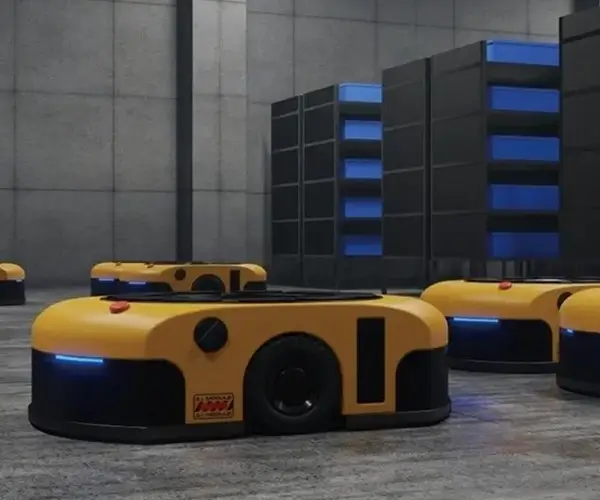Introduction: Embracing the World of Arduino and Servo Motors
Imagine a world where you can bring robotic arms, automated systems, and interactive projects to life with just a few components and some lines of code. Welcome to the realm of Arduino, a tiny yet powerful microcontroller that has revolutionized DIY electronics and robotics. At the heart of many automation projects lies the servo motor—a compact actuator capable of precise control over angular position, making it an indispensable component for robotics, remote controls, and automation gadgets.

But how do beginners and seasoned engineers alike learn to harness the power of servo motors with Arduino? The answer is in simulation environments like Wokwi, an online platform designed to simplify the design and testing of electronics projects without the need for physical hardware. In this article, we'll explore how to program a servo motor using Arduino code within Wokwi, highlighting essential concepts, step-by-step tutorials, and practical tips to jumpstart your projects.
Why Choose Servo Motors for Your Projects?
Servo motors stand apart from regular DC motors due to their ability to be accurately positioned and held at specific angles. Unlike simple motors that spin continuously, servos receive control signals that dictate their position, enabling precise movement. This makes them perfect for applications like:
Robotics arms Pan-and-tilt camera mounts Remote-controlled vehicles Automated curtains or door locks Animatronics and display devices
Their relatively low cost, ease of control, and versatility make them a favorite among hobbyists and students.
The Power of Arduino in Robotics
Arduino microcontrollers are lauded for their beginner-friendly environment, extensive community support, and adaptability. With an Arduino, controlling a servo motor becomes a straightforward task—write a few lines of code, upload to the board, and watch your mechanical component respond.
Here’s why Arduino is the perfect partner for servo-based projects:
Ease of programming: Arduino code (based on C/C++) is simple and intuitive. Open-source hardware: Numerous tutorials, shields, and accessories. Community support: Forums, tutorials, and shared code snippets.
Why Use Wokwi for Simulation?
Physical prototyping is invaluable but often cumbersome for learning and quick testing. Wokwi offers a virtual environment that emulates Arduino boards and various components, including servo motors. Benefits include:
No hardware needed initially Instant testing and debugging Collaborative design sharing Cost-effective learning
Think of Wokwi as your test drive before building the real thing!
Setting Up Your Wokwi Environment
Getting started with Wokwi is straightforward:
Visit Wokwi.com Create an account (free) Start a new project by selecting the Arduino UNO template Add components: search for "Servo" and place it in the workspace Connect the servo to the designated PWM pin (e.g., Pin 9) Write your Arduino code within Wokwi's code editor
This seamless interface allows you to focus on learning rather than setup complexities.
Basic Arduino Code for Controlling a Servo Motor
Let's begin with a simple code that makes the servo sweep back and forth. This forms the foundation of many projects:
#include Servo myServo; // Create servo object void setup() { myServo.attach(9); // Attach servo to digital pin 9 } void loop() { for (int angle = 0; angle <= 180; angle += 1) { myServo.write(angle); // Set servo position delay(15); // Wait for servo to reach position } for (int angle = 180; angle >= 0; angle -= 1) { myServo.write(angle); delay(15); } }
This code smoothly sweeps the servo from 0 to 180 degrees and back, demonstrating fundamental control.
Understanding the Code Components
Including the Servo Library: This library simplifies servo control. Creating a Servo Object: Servo myServo; defines a variable to manage the servo. Attaching the Servo: myServo.attach(9); binds the servo to pin 9 (PWM capable). Sweeping Loop: The for loops increment and decrement the angle, providing smooth movement. Delays: delay(15); extends the movement duration for smoothness—adjustable for faster/slower movement.
Testing Your First Wokwi Simulation
Once you input the code, hit “Start Simulation” in Wokwi. Watch the servo move back and forth, mimicking a robotic joint’s behavior. This immediate visual feedback reinforces understanding and boosts confidence.
Extending the Basics: Adding User Control
Next, imagine controlling the servo with a potentiometer—a variable resistor—so that manual adjustments are possible. You can include a virtual potentiometer in Wokwi, connect it to an analog input, and write code that reads its value to set the servo angle dynamically.
Example:
#include Servo myServo; int potPin = A0; // Potentiometer connected to Analog pin 0 void setup() { myServo.attach(9); } void loop() { int sensorValue = analogRead(potPin); // Read potentiometer int angle = map(sensorValue, 0, 1023, 0, 180); // Map the value to angle myServo.write(angle); delay(15); }
This simple project creates an interactive servo controller, paving the way for more complex robotic systems.
How to Incorporate Sensors and Feedback
Beyond simple control, integrating sensors like ultrasonic distance sensors, light sensors, or encoders allows creating responsive, intelligent systems. Wokwi supports these components for simulation, enabling comprehensive testing.
Summary of Part 1
In this segment, we've explored the basics of Arduino-controlled servo motors and the advantages of using Wokwi for simulation. Starting with simple sweeping movements, users can grasp fundamental concepts before advancing to more sophisticated, sensor-driven projects.
Leveraging innovations in modular drive technology, Kpower integrates high-performance motors, precision reducers, and multi-protocol control systems to provide efficient and customized smart drive system solutions.




































